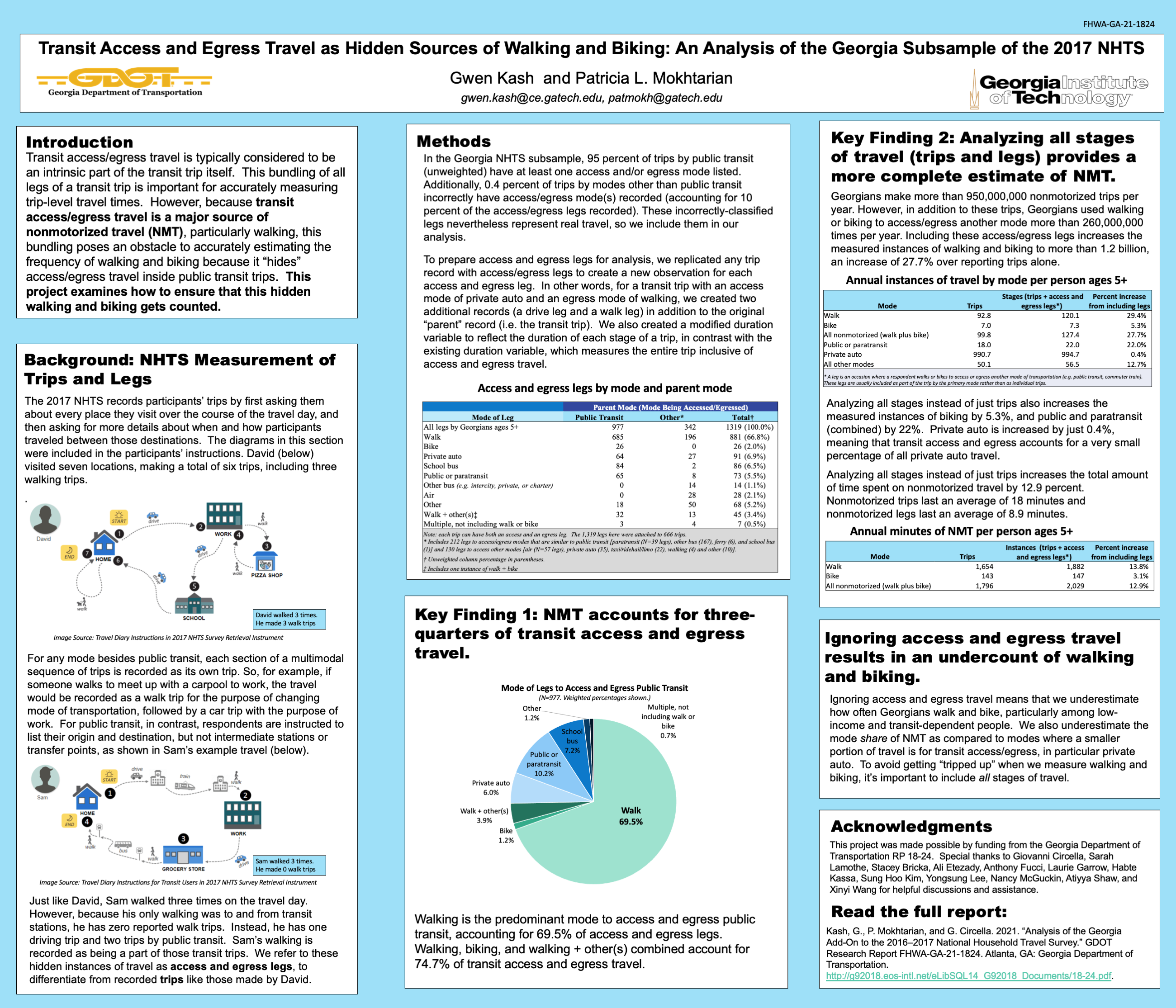PI: Patricia Mokhtarian
Co-PI(s): Gwen Kash
Institution(s): Georgia Institute of Technology
Abstract
Transit access/egress travel is typically considered to be an intrinsic part of the transit trip itself. However, because transit access/egress travel is a major source of nonmotorized travel (NMT), particularly walking, this bundling poses an obstacle to accurately estimating the frequency of walking and biking because it ?hides? access/egress travel inside public transit trips. Using data from the 2017 NHTS Georgia subsample this project examines how to ensure that this hidden walking and biking gets counted. We provide an overview of how access/egress travel is measured in the 2017 NHTS. We then describe our methods for extracting and analyzing instances of walking and biking that are stored in the data as access/egress travel and formatted differently than independent trips. We highlight two key findings: (1) walking is the predominate mode of transit access egress travel and (2) including access/egress travel increases the number of instances of walking and biking by 27.7% compared to using separate trips alone. Incorporating access and egress travel is important to avoid underestimating NMT, particularly among transit-dependent people.

Please comment below with any statements or questions you may have. Also let GTI if you would be interested webinars or presentations on similar topics.
